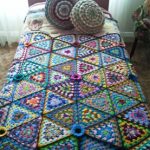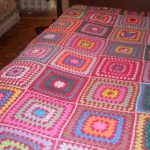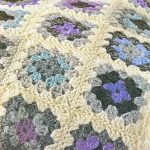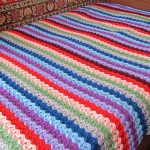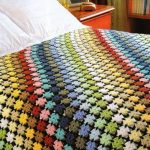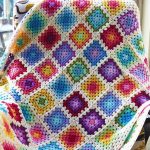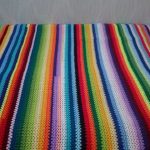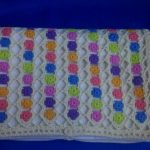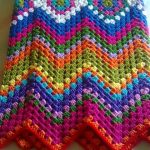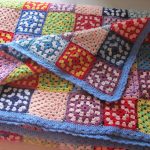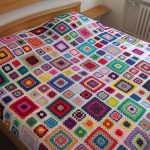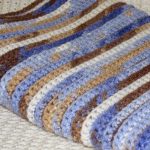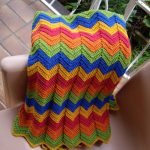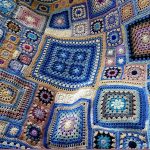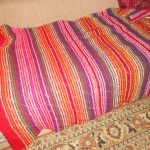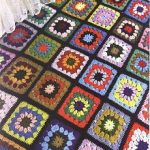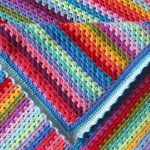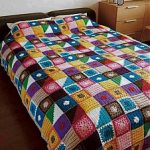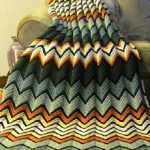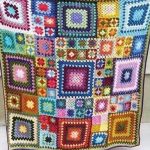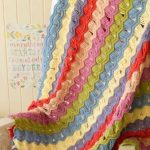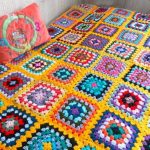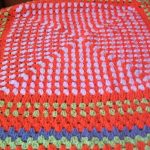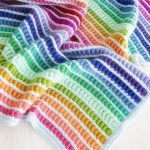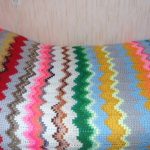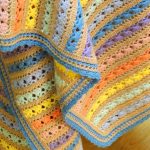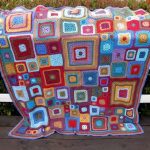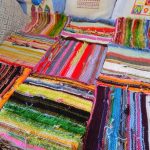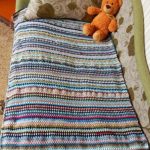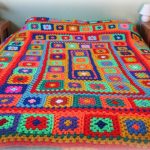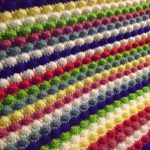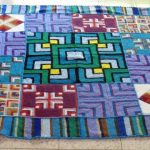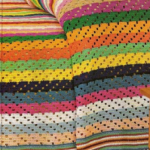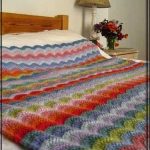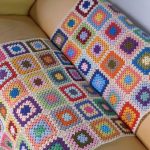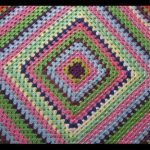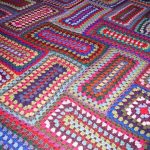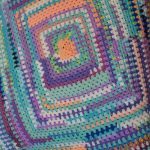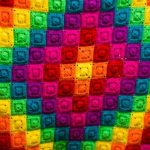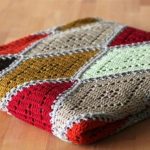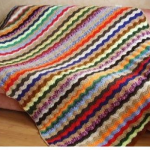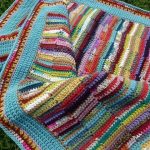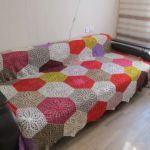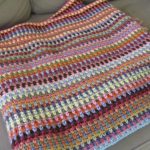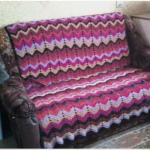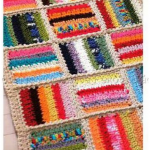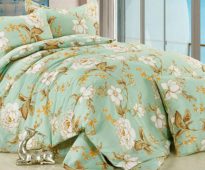 Coarse calico and its application
Coarse calico and its application
Knit a crochet crochet of yarn
It is difficult to guess with the number of skeins needed. Often we insure ourselves and buy obviously more. But here another question arises - what to knit from yarn residues? We have a few ideas on how to use them effectively.
The first, the most voluminous and at the same time interesting in execution, is the idea to tie a rug of yarn residues with knitting needles. Drawings can be the most diverse - zigzags, squares, smooth surface, pigtails. Everything that you practiced when knitting scarves or sweaters, we bring to life by creating a veil of yarn with knitting needles.
The question may arise - how to knit a product from different sorts of threads, different in color, texture and thickness? Thin thread, for example, fold in half. In one product, we safely combine wool and wool mixture, mohair and melange, cotton and acryl - the final canvas that you set to knit together will surely please you.
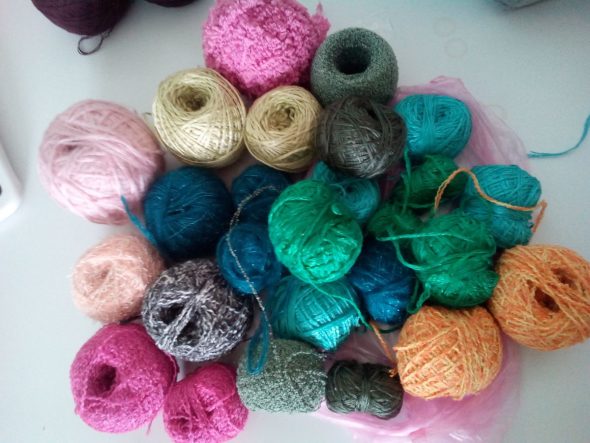
Remains of yarn of different colors and textures for the original rug do it yourself
Content
- 1 Preparation of hanks for plaid
- 2 The scheme of knitting a rug from crochet yarn
- 3 Scheme knitting plaid needles
- 4 Cushions and rugs
- 5 What else can be knitted from yarn residues?
- 6 Video: Cover-plaid of yarn residues
- 7 Photo gallery of beautiful multi-colored plaids for a bedroom or living room, knitted from yarn residues:
Preparation of hanks for plaid

Preparation of yarn for knitting a square plaid
When using the remaining material in a ball, it is not necessary to prepare it for knitting the blanket. And if you dissolve an old product - a scarf or a sweater - then the threads have a wavy structure and they must be prepared so that the knitting of a bright and cozy plaid is pleasant and the matter “does not jump”. To do this, they need to be steamed by holding over boiling water, or wash and dry. Since it is inconvenient to handle the balls, they are pre-wound on the legs of an upturned stool or the head of a chair. After washing and drying the threads, they are wound back into a ball, to make it easier to tie the product in the future.
The scheme of knitting a rug from crochet yarn
Consider crocheting a rug knitting pattern. For this we need:
- several residual hanks;
- two hooks with numbers 3 and 9;
- scissors;
- the ability to gain air loops;
- ability to knit double crochets.
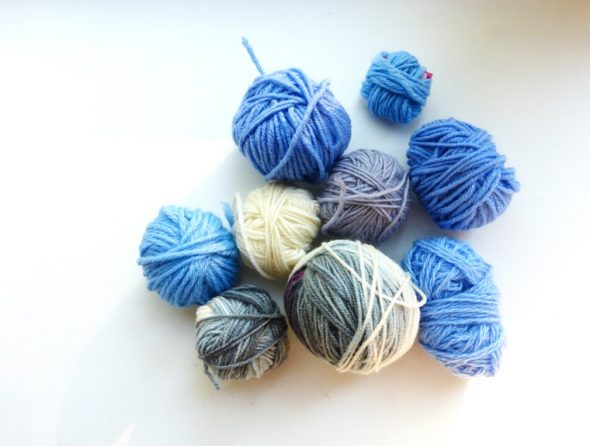
The yarn remains sorted by color
Hook number 3 dial the air loops until the thread runs out.
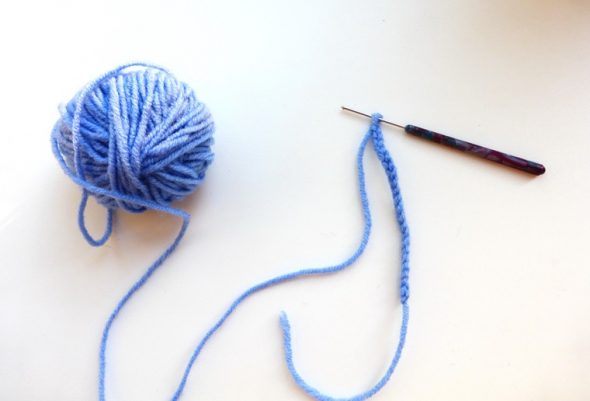
From each ball crochet knit air chain, on both sides leave tails
Then add the following. Thus we prepare all the skeins. The threads of different colors are simply tied with a double knot.
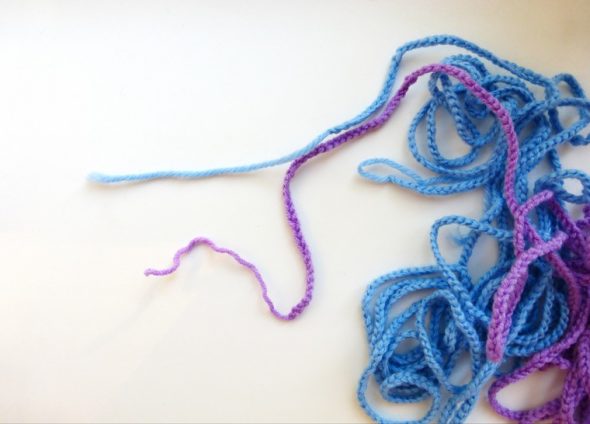
We get a lot of multi-colored chains
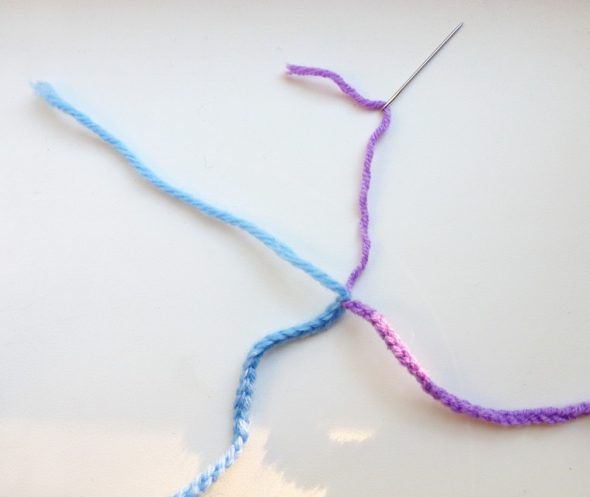
We take one of them, we put a tail in a needle, we insert a needle in the beginning of another rope, we tighten
Subsequently, the knots will not be visible on the knitted product. Then we wind all collected air loops into a ball.
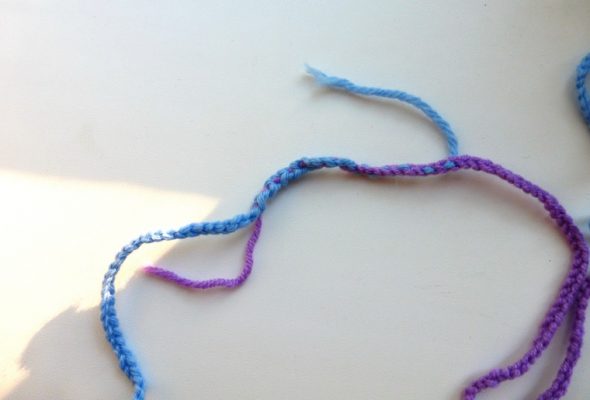
We make 8-10 stitches on a blue rope, similarly 8-10 stitches on a purple string
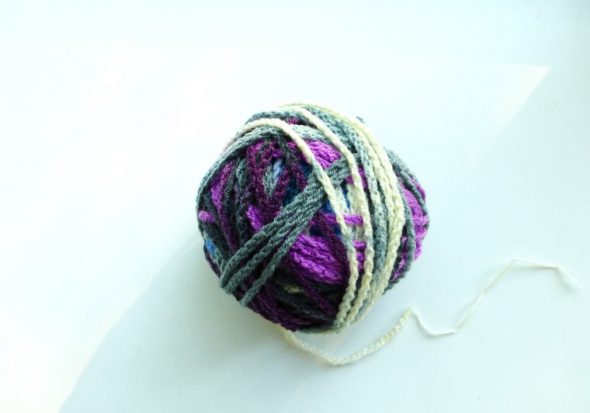
We get an unusual multicolored ball
Now we are working with crochet number 9. We start to knit air loops from the resulting ball. We collect the number of loops based on the desired width of the product. For example, on a blanket of 120 cm it took 90 loops. But it also depends on the thickness of the thread. You can knit a trial piece and measure it with a ruler, which will help to make an accurate calculation of how many loops fit in 1 cm.
Go ahead.We knit two air loops of thread, in the first of them weave a column with a crochet. And so throughout the width of the plaid. As you can see, nothing complicated. It is advisable to periodically recalculate the loops so that there are no random knits simultaneously of two loops. Otherwise, the finished canvas will be narrowed and deformed. If it is knitted correctly, it will be light and weightless.
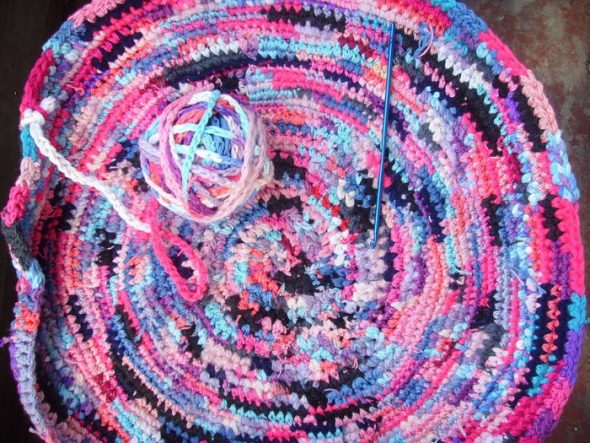
You can knit a round rug from such a ball
Scheme knitting plaid needles
We now consider a detailed description of how to knit a product from yarn residues with knitting needles. Schemes of paintings abound with variety, allow to achieve different effects and texture.
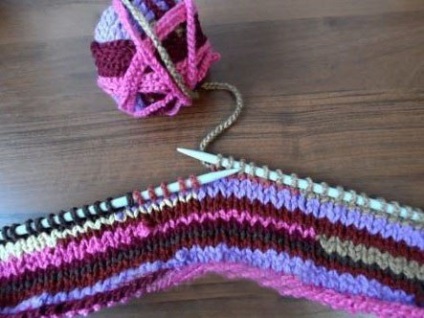
You can knit a rug with knitting needles from homemade multicolored yarn
Below we consider one of the instructions:
1 row - classic front loops for the front wall;
2 - bind like the first;
3 - the first front one (after the edge one), the second loop is removed without knitting. Repeat again;
4 - the first purl (after the edge), remove the second loop without knitting. Repeat again;
5 and 6 rows - knit fully facial;
7 and 8 rows - knit on the scheme of the third and fourth.
As a result, the blanket is soft, gentle, airy and almost weightless. And the knitting process will allow you to relax, calm down and feel peace.
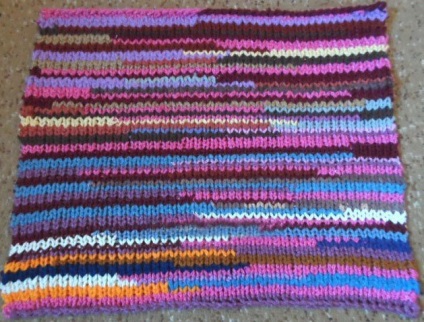
Multicolored residue mat connected by knitting needles
Cushions and rugs
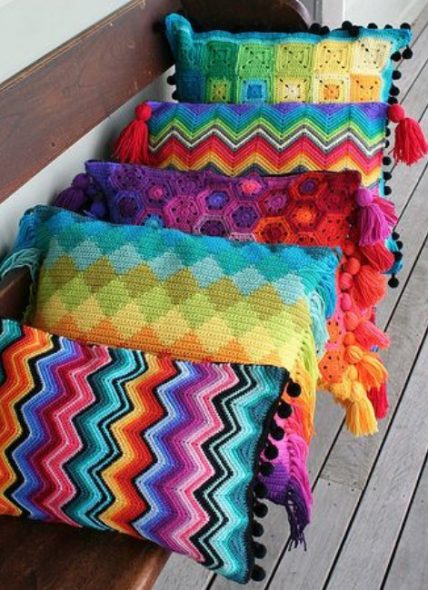
Multicolored do-it-yourself decorative pads
Pillows and rugs from the remnants of yarn to knit even more entertaining. They have a smaller volume, and the work is much faster.

Pillow, knitted of base pink yarn and multi-colored yarn residues
Almost before our eyes there is a new ready-made canvas. Experiment with pictures, use squares of different colors. One half, or even a quarter of the pillow can be knitted with rhombuses, and make the back side ornament in the form of a pigtail.
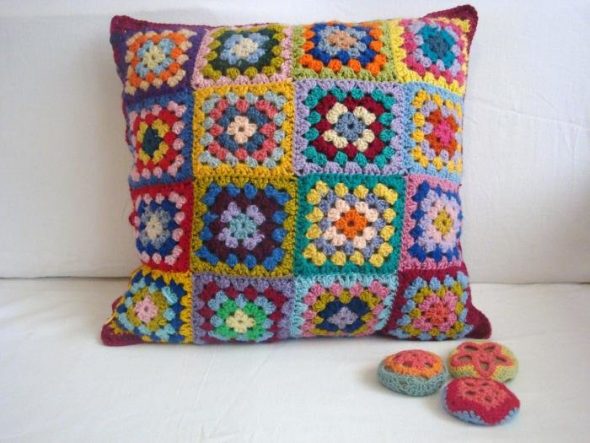
Bright unusual homemade cushion "Colorful Squares"
Do not be afraid to dream and realize bright ideas, and you will surely find yourself satisfied with the results.
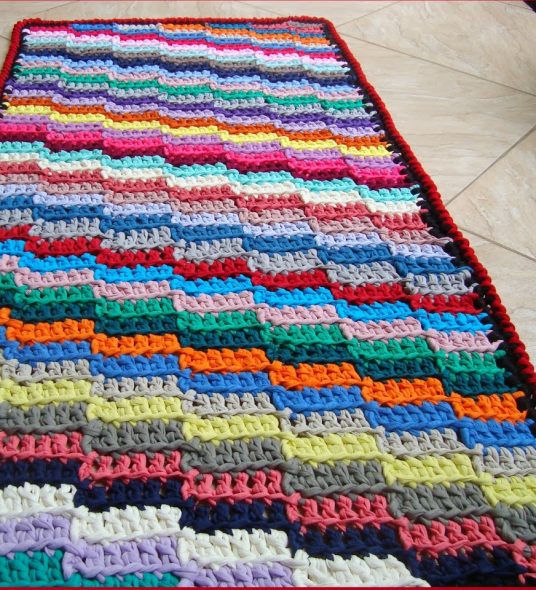
Large and beautiful rug of yarn residues, not only functional, but bright and beautiful
Knitted rugs will definitely take a decent place in the house. Put them on the floor, or hang them on the wall. Living room, kitchen, bedroom, bathroom, corridor - they will create softness and comfort everywhere. Make a rug for your four-legged friend, and you can be sure of his thanks.
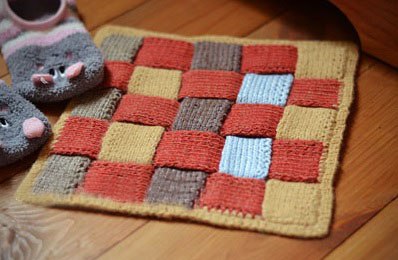
A small chess rug of thread remnants
What else can be knitted from yarn residues?
In addition to the plaid, there are many ideas for the house, crocheted or knitting. Share them:
- napkins;
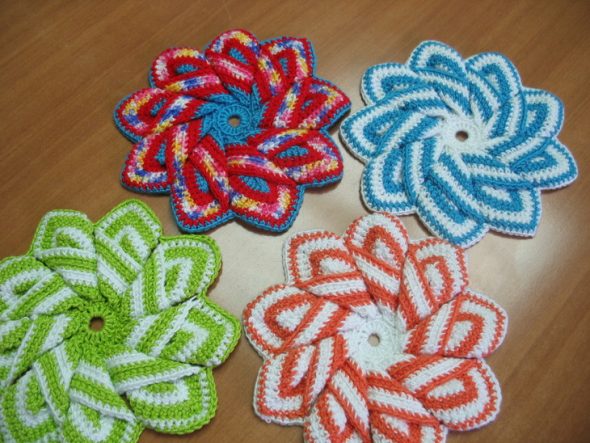
Bright napkins, coasters for hot fit perfectly into the kitchen interior
- pot holders;
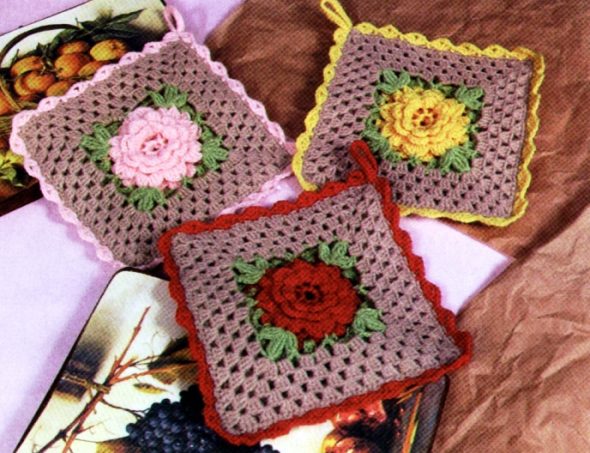
Crochet Kitchen Tacks
- vests and tunics;

Colored vest with knitting needles
- socks, socks, leggings;
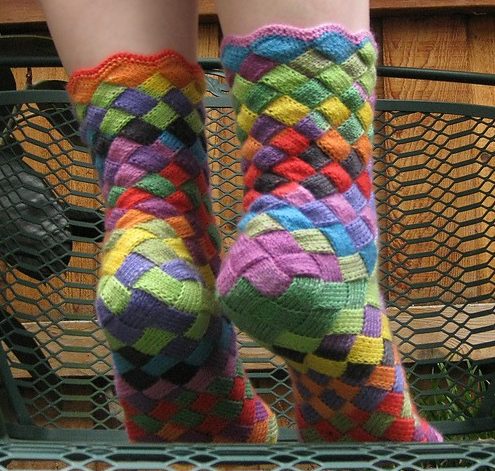
Knitted patchwork socks
- beads, bracelets, earrings;
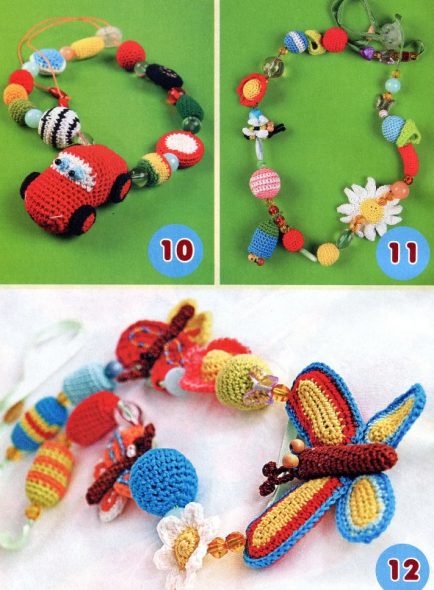
Bright slingobu will delight your kids and require very little yarn
- gift bags and boxes;
- toys and key chains, pompons of different colors;
- bookmarks;
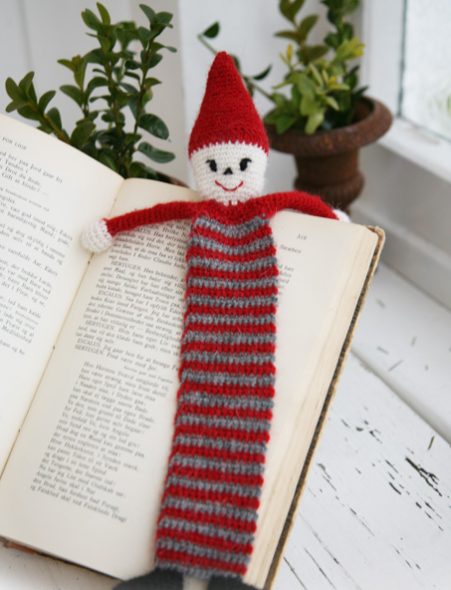
Thematic bookmark for books and textbooks will delight kids
- covers for chairs and stools;
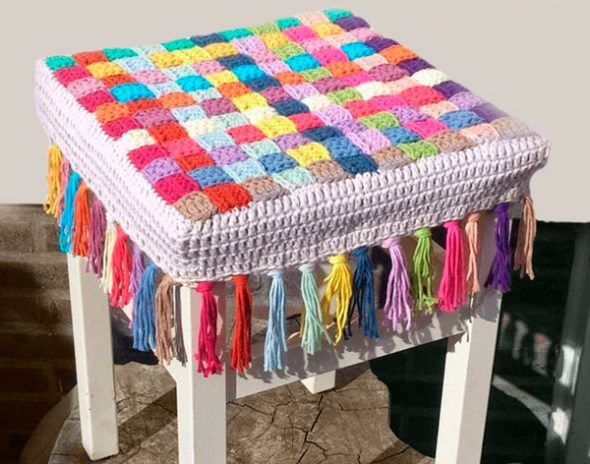
The cover on the stool with a fringe of yarn residues
- appliqués and clothing patches;
- wall panels;

Beautiful panel on the wall of knitted flowers
- covers for mugs, bottles and candles;
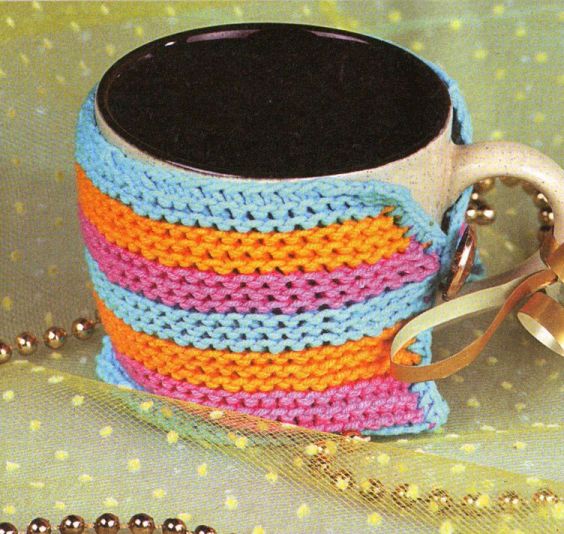
A colorful cover on your favorite mug
- decor in the form of flowers;
- pockets for small items.
Knit with pleasure!
Video: Cover-plaid of yarn residues
Photo gallery of beautiful multi-colored plaids for a bedroom or living room, knitted from yarn residues:
 Coarse calico and its application
Coarse calico and its application
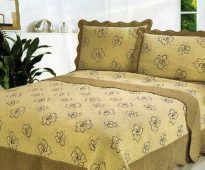 Choosing a bedspread
Choosing a bedspread
 Plaid "Bunny with ears"
Plaid "Bunny with ears"
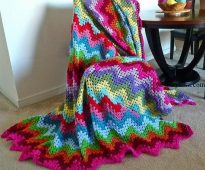 Knit crochet plaid pattern "zigzag"
Knit crochet plaid pattern "zigzag"
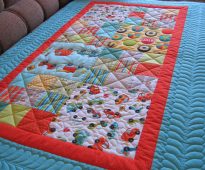 How to quilt a blanket
How to quilt a blanket
